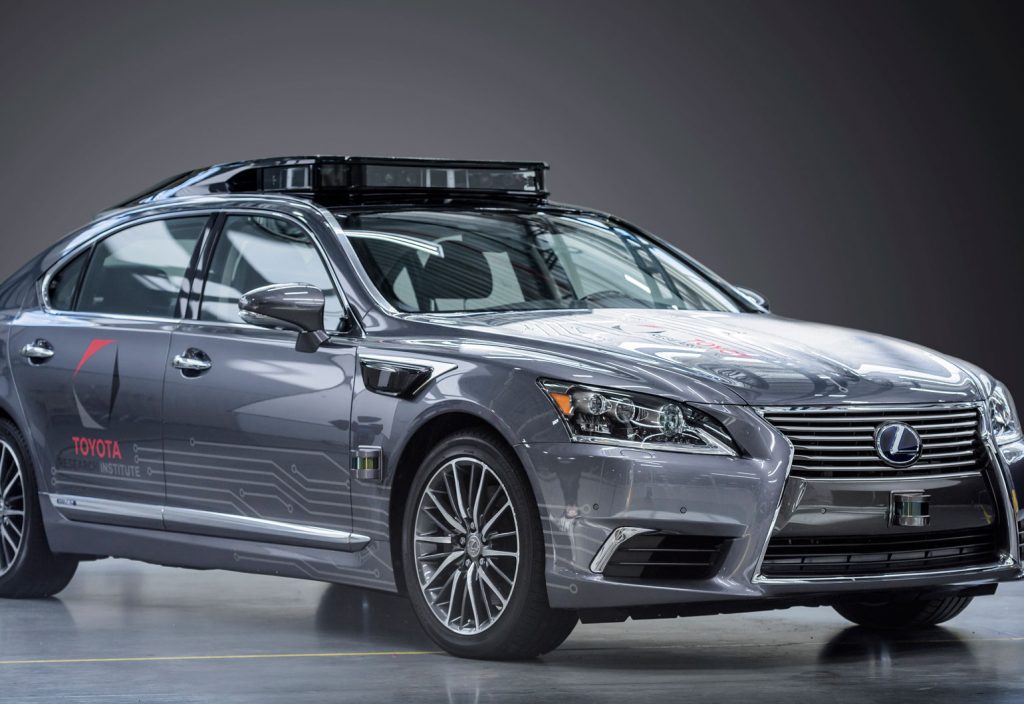Ryan Eustice is creating a self-driving car that will never cause an accident.
In March of 2018, the first fatality involving an autonomous car was reported when an autonomous Uber hit and killed a woman in the US state of Arizona.
While this and other accidents involving autonomous cars have in some cases resulted in development of the vehicles being suspended, Ryan Eustice, Senior Vice President of Automated Driving at Toyota Research Institute (TRI) and Associate Professor at the University of Michigan, is hoping to create an uncrashable car.
Eustice’s previous work has focused on technologies that help underwater vehicles better navigate and understand their surroundings.
This included deploying robots on field cruises to make a map of the seafloor using cameras, sonar or LIDAR, with one of his robots sent to the site of the Titanic wreck to reconstruct and map the remnants.
At TRI, he leads a team that is developing a sensor-rich, fully autonomous vehicle built around artificial intelligence, working on the idea that instead of the human acting as the guardian of the autonomous car, the AI guards the human.
The team’s two-pronged approach to this gives consumers a choice of Guardian or Chauffeur mode.
In Guardian mode, a human driver maintains control over the vehicle. The automated driving system operates in the background, monitoring for potential crash situations, ready to intervene to protect the vehicle’s occupants when needed.
“The higher the Guardian capability, the greater the number and types of crashes it can help protect against,” Eustice said.
For example, features like Lane Departure Alert and Automatic Emergency Braking can help to prevent or mitigate some crashes.
At the highest level, it could help to ensure a vehicle driven by a human would never cause a crash, regardless of any error by a human driver, and to steer a vehicle to avoid or mitigate crashes that would otherwise be caused by other vehicles or factors.
Meanwhile, Chauffeur mode is TRI’s version of full vehicle autonomy. Here, all occupants are passengers and the car is essentially driving itself.
“By pursuing Guardian and Chauffeur in parallel, we believe we can also speed the development of safety technology and help save lives sooner rather than later,” Eustice said.
So far, the team’s testing has involved simulation, closed course testing and public road testing with trained drivers and engineers monitoring the systems.
In the United States, TRI is currently testing prototype vehicles on public roads with safety drivers in Michigan and California.
TRI is also conducting closed-course testing at GoMentum Station in Walnut Creek, California, the University of Michigan’s Mcity testing facility, and the American Center for Mobility, as well as conducting tests on private, gated land in Massachusetts.
In October this year, the team will begin testing at its own closed course facility. The team has also gotten creative for its Guardian testing.
“We designed a second vehicle control cockpit on the front passenger side of our test cars. This featured a fully operational drive-by-wire steering wheel and pedals for acceleration and braking,” Eustice said.
“This set-up allows the research team to probe effective methods of transferring vehicle control between the human driver and the automated driving system in a range of challenging scenarios.”
This article originally appeared as “Crash-proof” in the October 2018 issue of create magazine.
